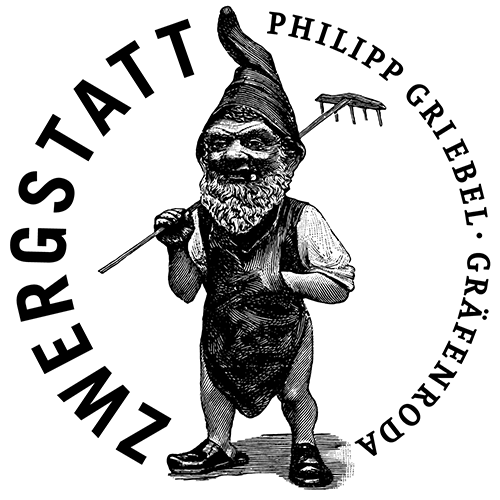
THE GNOME
Gnomes have accompanied us humans in legends, fairy tales and folk myths since time immemorial. Deeply connected with the Earth, these little creatures know the ways to secret treasures and are endowed with a wide range of natural powers.
Shy of humans, they are said to do both good and demonic deeds, preferring to work in secret, but tirelessly and with great diligence.
No wonder that in the remote region on the northern side of the Thuringian Forest, the fantasy of the gnome was given a permanent form. There was clay right outside the doorstep and the figures of diminutive adults and children who mined iron ore, copper slate, even gold and silver underground in low tunnels inspired its countenance: the disproportionate head in relation to a petite body, aged with an enormous beard, and the unmistakable red pointed cap matching the miners’ smock.
Gnomes, alongside lifelike animal figures, fitted seamlessly into the Thuringian idea of late-Romanesque English gardens and parks, which were created locally as natural landscapes at the end of the 19th century. Financially supported by the Thuringian aristocracy, numerous clay figure factories were founded and flourished into one of the European centres for ceramic figure production. Hiking tourists and those seeking healing during air cures in and around Gräfenroda eventually made the clay gnome known and popular in all parts of the country and beyond its borders. In the early 1920s, the gnome, praised as a garden gnome, ultimately also conquered the allotment gardens of the urban population, where it gardened, played music, read, daydreamed, and fished according to their needs. Here, in the eyes of many, the garden gnome perfected itself as the embodiment of German nature: petty-bourgeois, cosy, perhaps a bit old-fashioned, but always industrious.


 Deutsch
Deutsch